Laini Taylor came to the Salt Lake City Library on September 27, 2014 for the kick-off of the Utah Humanities Book Festival. Laini’s presentation was beautifully written just like her books. It’s one of the best author presentations that I’ve been to. She didn’t lecture or even read from her novel. Laini turned what she’s learned into an entertaining story – like a true writer.
Story Cat
Laini Taylor began her presentation with a story about a guy who happens to be descended from Samual Morse (the guy who invented morse code and the telegraph).
SIDE NOTE: Laini couldn’t help going into the back story of Samuel Morse and why he invented morse code. Samuel was originally a painter and he got a letter while working on a portrait that said his wife was sick but by the time he got back his wife had died AND had been buried. That event was the inspiration to invent the morse code.
But this story is about Finley Morse who one day writes like crazy while a cat sits in his lap even though he doesn’t like cats. When he finishes writing, it feels like he woke up from a dream. He doesn’t really know what he wrote. When he reads it and sees that it’s a very strange romance he freaks out and burns the story because he usually writes Important Literary Fiction.
Later he meets this girl that wrote the exact same story but in her own words. Wondering how they have the exact same story, he asks her where the story came from. She says she thinks it came from a cat.
MORAL OF THE STORY – get a black cat. Find the story cat. It will write the stories for you.
Obviously the story isn’t true but Laini talks about how she wants it to be that easy.
What Writing Is Like For Laini Taylor
- Write a sentance
- Read the sentence
- Die a little over how inadequate the sentence is
- Attempt to leave it there and lay another sentence behind it. This is what one does when writing – accumulate sentences.
(Then she feels the urge to delete the sentence.)
I think that describes what writing is like for a lot of people (including me).
BEST QUOTE from Laini: “Learning to operate my brain has been the work of my creative life.”
When she said that, I think angel’s descended with epiphanies on their wings. If I want to be an author someday, I need to do that too.
Laini said that she always wanted to be a writer but struggled with perfectionism. She could write plots in massive outlines, she could rearrange sentences and words to make them interesting but she couldn’t figure out how to combine the two. Transforming ideas into language is the art of storytelling and is a skill that you can learn that combines the plot and the pretty language. She mentioned the Society of Children’s Book Writers and Illustrators as a place that she learned a lot about writing.
Growing Up Laini
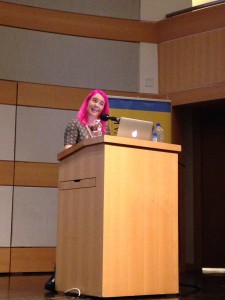 Laini Taylor is the only book signing I’ve been to where the author spoke about their life of reading and writing and it was completely fascinating. As a kid, she loved buying notebooks and candy and writing in them. She loved writing maps and creating worlds. She wrote stories for her friends as gifts. There was the “Choose Your Own Adventure” story gift and one with a lot of French because she was “the most pretentious teenager that ever lived.” LOL. She read some hilariously bad writing that she did as a teen.
Laini Taylor is the only book signing I’ve been to where the author spoke about their life of reading and writing and it was completely fascinating. As a kid, she loved buying notebooks and candy and writing in them. She loved writing maps and creating worlds. She wrote stories for her friends as gifts. There was the “Choose Your Own Adventure” story gift and one with a lot of French because she was “the most pretentious teenager that ever lived.” LOL. She read some hilariously bad writing that she did as a teen.
BUT.
One of the most moving things about her presentation was her journey to respecting her teen self and what she wanted back then. As an adult, she still loves the same things she did as a teen. Even though her teen writing wasn’t very good, mostly because she didn’t know the difference between good and bad taste, she could still see herself in her writing. And I found that idea so beautiful. It’s easy to look back at our teen selves and see hormones and mistakes and bad decisions. Our teen selves shaped who we are as adults and there was nothing wrong with going through that phase or who we were back then. Teens are passionate because their brains are made that way – they can’t make rational decisions, weigh consequences, control emotions or impulses.
Europe: Daydreams vs. Reality
Laini went to Europe alone when she was 17. She had expectations about Europe that mostly came from books. It was a great summer but nothing like she imagined in her daydreams – no heartache or squalor or mystery. Books can cause what she calls “readers dissatisfaction with reality syndrome.” She was sad to realize that as an adult her daydreams wouldn’t just happen. She had to make them happen. Fiction is a way that we can essentially live more than one life. The Daughter of Smoke & Bone is the daydream Laini wanted to live as a teen. It also explored the idea of what she would be like as a teenager if she was growing up now.
The Fictional Dream
Like all good writing, there is an unexpected twist. And since this presentation was written so beautifully it also contained an unexpected twist. The magic of writing – the secret of writing – is that it CAN be like the story cat in real life. Laini talked about John Gardner’s idea of the fictional dream which is the feeling of being so fully immersed in a book that you no longer notice the words on the page and you feel like you are in the story in this dream-like state. I knew exactly what she was talking about. I would describe it more like a movie playing in your head but I knew it was the exact same thing. John Gardner says that the better the writing, the better the dream. I love that idea. It turns writing from this chore about rules into this amazing experience that I usually have while reading books, but, since I’m writing it, now I’m in charge.
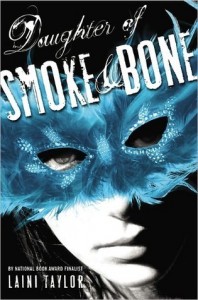 I related to her struggles with writing. She would stare at a blank screen a lot. She was an intense plotter because she didn’t want to waste any effort or time. She was scared of making a mistake. One day after struggling with a novel that wasn’t working, she decided to write for fun. She started with nothing and the experience felt like the story cat. She loved everything she wrote. That story turned out to be Daughter of Smoke & Bone. When I read Daughter of Smoke & Bone, I could tell that it was something that the author had put their heart and soul into. She didn’t outline the whole series. She would try new things and because she had gotten to know her brain and how it worked, she slowly discovered where the story should go. She spoke about her brain as if it was a person in such a detailed and charming way that I wanted to get to know my brain in the same way.
I related to her struggles with writing. She would stare at a blank screen a lot. She was an intense plotter because she didn’t want to waste any effort or time. She was scared of making a mistake. One day after struggling with a novel that wasn’t working, she decided to write for fun. She started with nothing and the experience felt like the story cat. She loved everything she wrote. That story turned out to be Daughter of Smoke & Bone. When I read Daughter of Smoke & Bone, I could tell that it was something that the author had put their heart and soul into. She didn’t outline the whole series. She would try new things and because she had gotten to know her brain and how it worked, she slowly discovered where the story should go. She spoke about her brain as if it was a person in such a detailed and charming way that I wanted to get to know my brain in the same way.
This whole presentation was very inspiring to me. I want to study writing, and get to know my brain, and write something that feels like a dream I wish I could live.
Q&A
Biggest mistake as a writer?
Staring at a blank page. To fix that, she has a working document where she can make mistakes and be messy and then her final story page. Daydream on the screen. Brainstorm, free write, write the scene several ways and discover what will happen. Remember there is no one right way to write a book.
Since Laini knows her perfectionist brain so well, she allows herself to rewrite a little as she goes along. She does that because she needs to get attached to the story and if it’s all crap, she won’t love it enough to move on. But she also has to keep in mind that she does need to actually move on. She compared it to swimming to buoys and then staying at the buoy for a little while and then swimming on.
How do you make the leap as a writer when you have financial concerns?
You can only be an artist by giving it your all. Don’t have a backup plan because you usually end up living your back up plan. It’s scary and sometimes you just have to take the risk.
My Question: how did you write Daughter of Smoke & Bone as a trilogy if you didn’t outline them and yet they all connect?
She couldn’t see very far ahead in the plot. She knew she wanted the epilogue of the last book but didn’t know how to get there. She brainstormed for the second book because she knew she needed a “thing.” The “thing” was the scene between Ziri and Thiago at the end of the second book. She had to to rewrite it a lot. I liked her advice to do more work than will ever show or that your readers will know about. Outlining is probably more efficient but it doesn’t work for her. Some things just came together that weren’t planned like the mythos of the last book. Luckily, she didn’t write herself into too many corners. She said it was a little scary to work that way (um yeah!) and she didn’t know if it would work out.
I’m glad it did work out because I thought the whole series was beautiful.







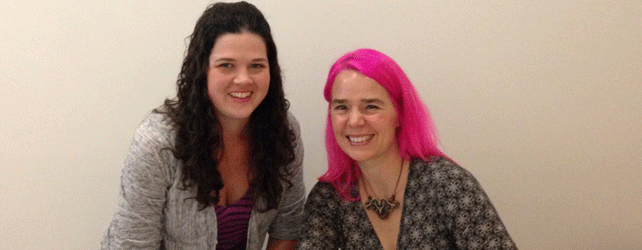
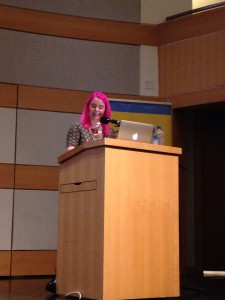
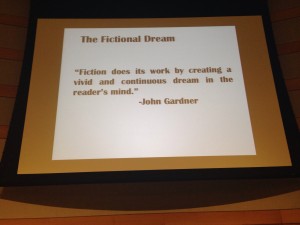
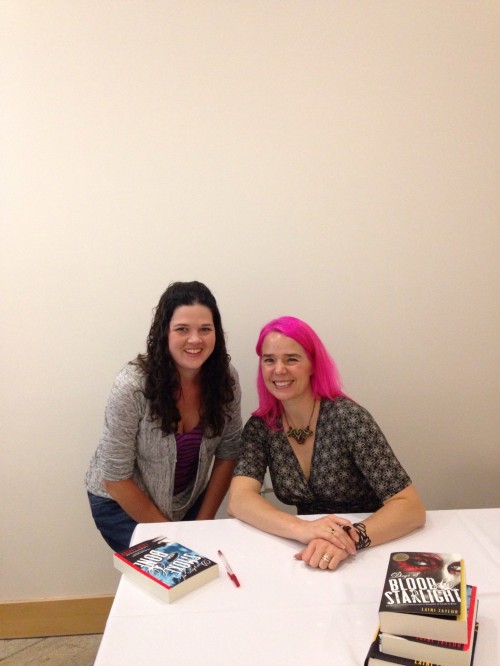
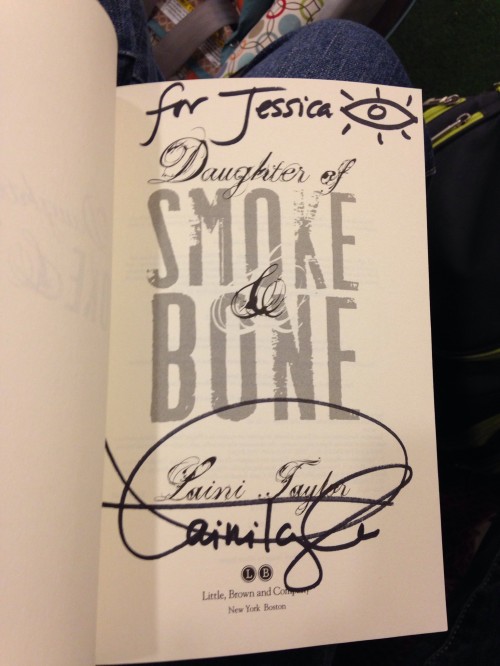
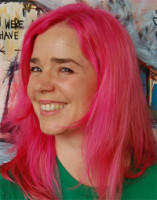
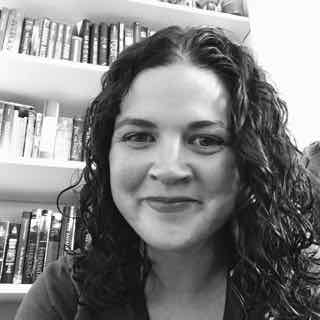 My name is Jessica. I love to read Young Adult and classic literature. I’ve been a book blogger for six years and I haven’t gotten tired of it yet. I’m a very curious reader. Writing about all the questions and thoughts I had while reading a book is the best hobby ever.
My name is Jessica. I love to read Young Adult and classic literature. I’ve been a book blogger for six years and I haven’t gotten tired of it yet. I’m a very curious reader. Writing about all the questions and thoughts I had while reading a book is the best hobby ever.
This is the most awesome recap ever! Here’s hoping she comes again sometime!
I love this recap! You (and Laini) have given me such great ideas.
Love her! And you asked a great question. I think you’re on a good track if you plan to follow lots of Laini’s writing advice for Nanowrimo this year because she clearly knows what she’s doing.